IV - By way of general conclusion:: Analysis of the confutatis
IV - By way of general conclusion
In
order to sum everything up, we will first present, to be seen and
heard, 30 texts from the tonal repertoire that illustrate all the
classified types of sequences, taking into consideration that the
section
devoted to harmonic sequences concentrated on the types of sequences
that recur most frequently (nos 1, 4, and 7). Lastly, we will
proceed to the harmonic division of an excerpt from Mozart's Requiem,
the Confutatis, which offers in remarkably close juxtapostion a whole
row of formulas and sequences, the two main categories of constants in
the harmonic discourse from Bach to Wagner that our research has, in
the end, identified and caused to emerge.

Example 469 : N. Medtner : Novelette, op. 17, no 1, Andante con moto (mm 1-9)
a) Type 1 sequence and b) Type 7 sequence

Example 470 : G.B. Pergolesi : Stabat Mater, Amen, Presto assai (mm 1-7)
Type 1 sequence
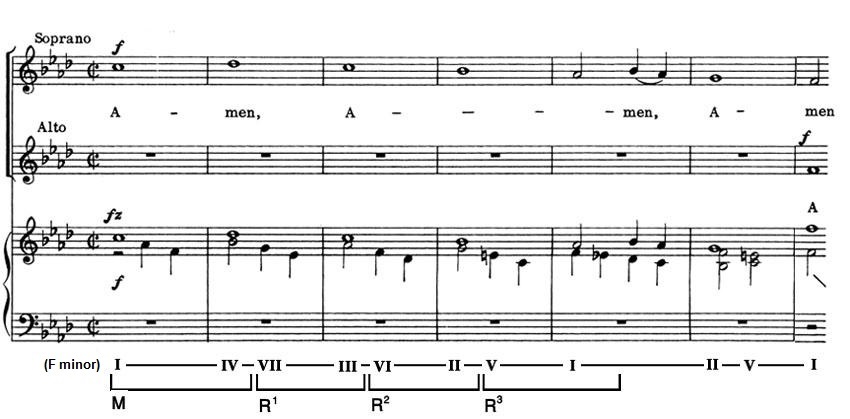
Example 471 : W.A. Mozart : Viennese sonatina no 2, Allegro (mm 8-14 from the end)
Motif no 5 and type 1 sequence

Example 472 : C.P.E. Bach : Württemberg Sonata no 5, I (mm 4-9)
Type 2 sequence

Example 473 : J.S. Bach : Goldberg Variations, no 25, BWV 988 (mm 1-4)
Type 3 sequence
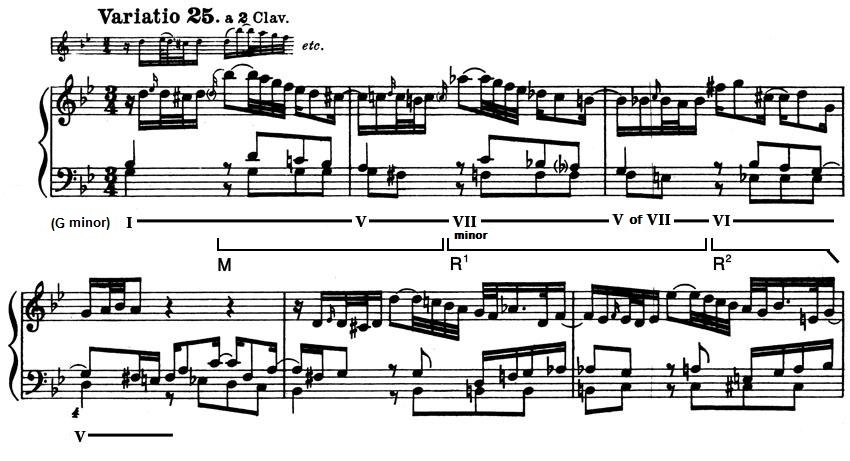
Note
above, at the moment of the function VII, the use of a perfect minor
chord built on the sub-tonic. This situation occurs occasionally in the minor
mode and can be attributed to an apparent acceptance of the lowered 2nd degree (a necessary component of
the Neapolitan chord) as an integral degree of a minor
scale.

Example 474 : F. Liszt : Piano concerto no 2, 6th section (4 measures before Q)
Type 3 sequence, where the chromatic lines (in the oboe) provoke
altered chords in a clearly non-modulating passage
img src="../image_en/conclu01/rajout30liszt.jpg" height="604" width="800" />
Example 475 : F. Schubert : Wanderer-Fantasy, D. 760, IV, Allegro (mm 44-51)
Type 3 sequence
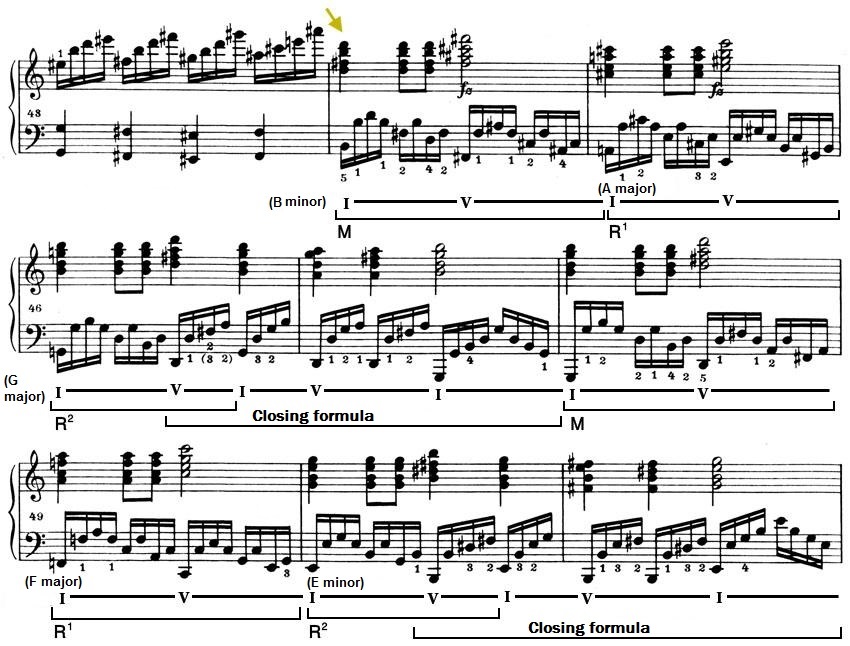
Example 476 : E. Grieg : Ein Traum, op. 48, no 6 (mm 20-32)
Type 3 sequence
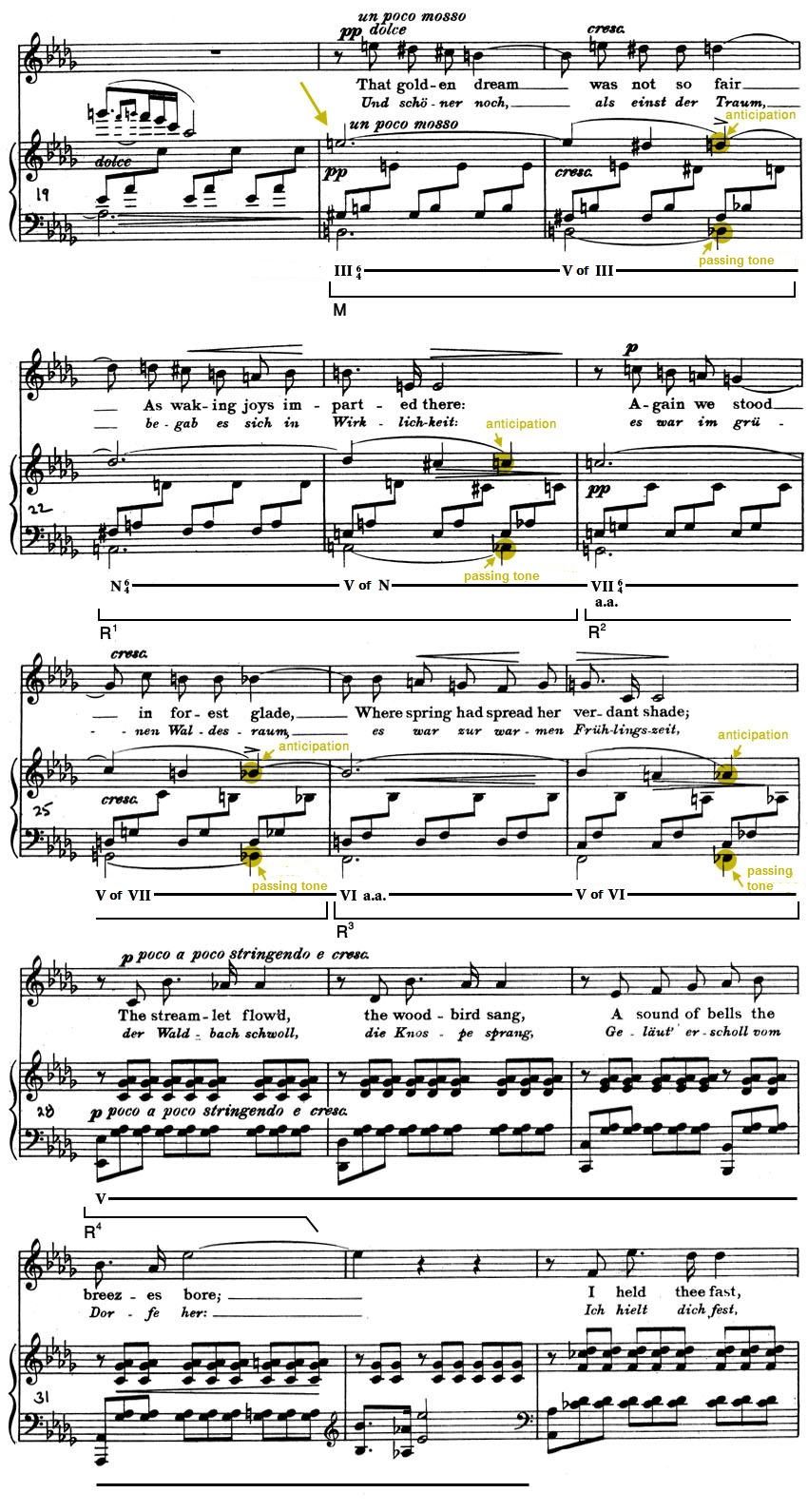
Example 477 : F. Chopin : Nocturne, op. 62, no 2, Lento (mm 58-70)
Type 3 sequence with 6/4 chords followed by a type 8 sequence and the closing
formula VI - II - IV - V of V - V - I
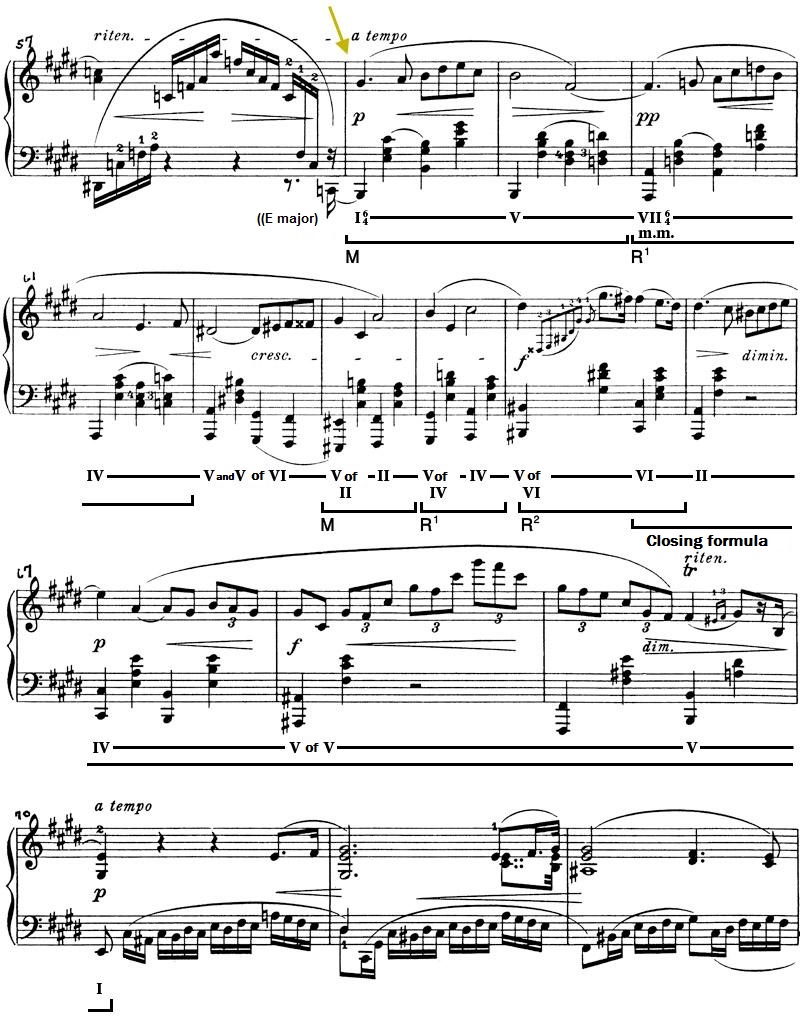
Example 478 : W.A. Mozart : Die Zauberflöte, no 14, Aria of the queen of the night (mm 24-35)
Type 4 sequence
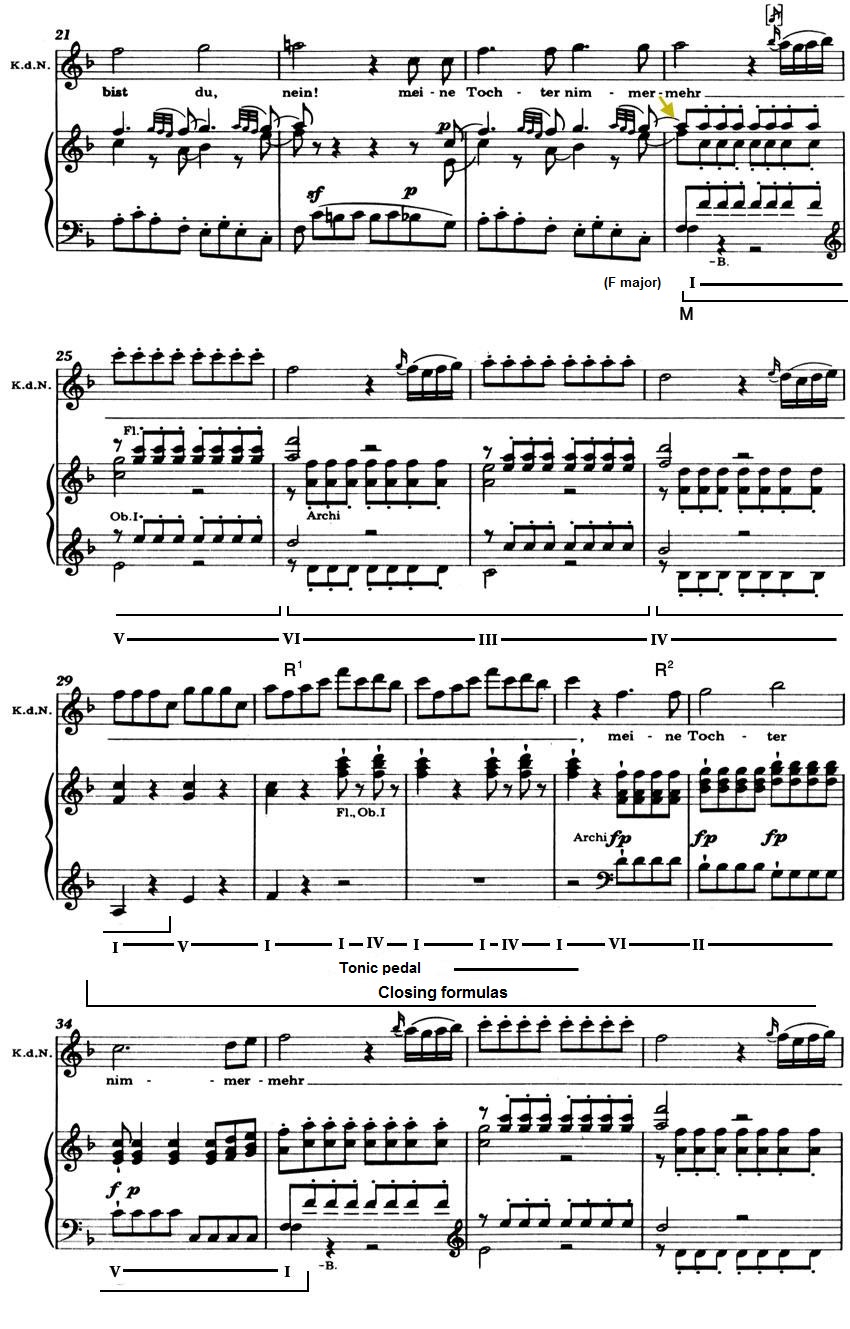
Example 479 : C.P.E. Bach : Württemberg sonata no 4, III, Allegro (mm 40-47)
Type 5 sequence and motif no 20
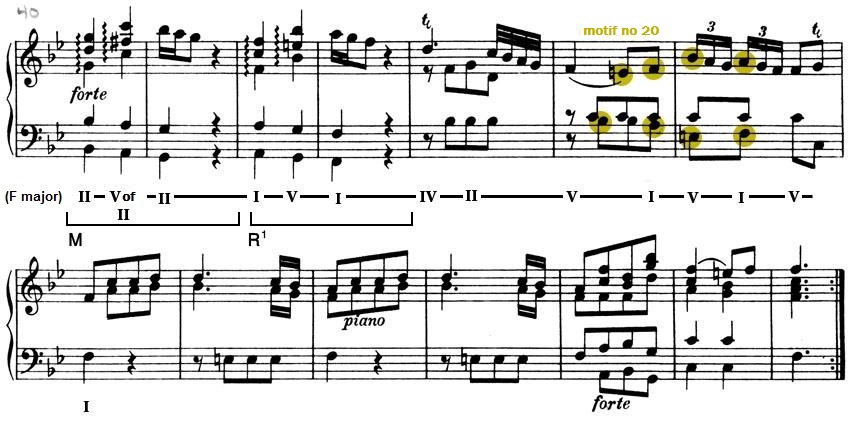
Example 480 : J. Haydn : Piano sonata, Hob. XVI:28, I (mm 9-12)
Type 5 sequence

Example 481 : W.A. Mozart : Piano concerto, K. 488, I, Allegro, cadenza (by Mozart) (mm 278-281)
Type 5 sequence
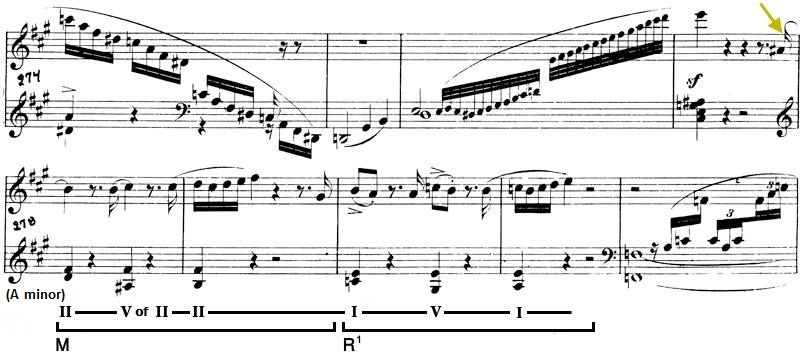
Example 482 : J. Brahms : Symphony no 4, op. 98, II, Andante moderato (mm 110-113)
Type 5 sequence

Example 483 : L.V. Beethoven : String quartet, op. 18, no 1, III, Scherzo (mm 11-25)
a) type 6 sequence and b) type 9 sequence with grafts

Example 484 : J.S. Bach : The Well-Tempered Clavier vol. I, fugue no 13, BWV 858 (mm 17-18)
Type 6 sequence

Example 485 : F. Chopin : Piano sonata no 1, op. 4, I (mm 98-105)
Type 6 sequence preceded by a type 1 sequence
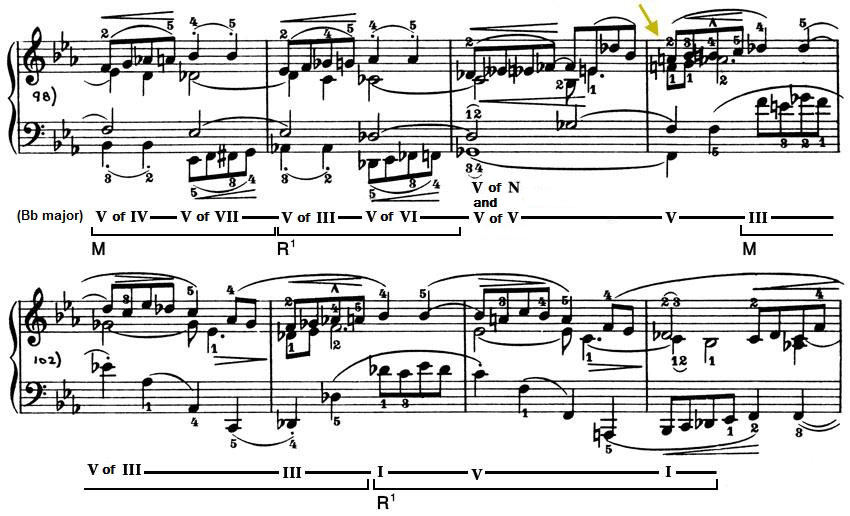
Example 486 : E. Grieg : Minstrel's song, op. 25, no 1 (mm 1-8)
Type 6 sequence

Example 487 : W.A. Mozart : Symphony no 40, K. 550, III (mm 15-26)
Type 6 sequence and motif no 20 with respect to IV
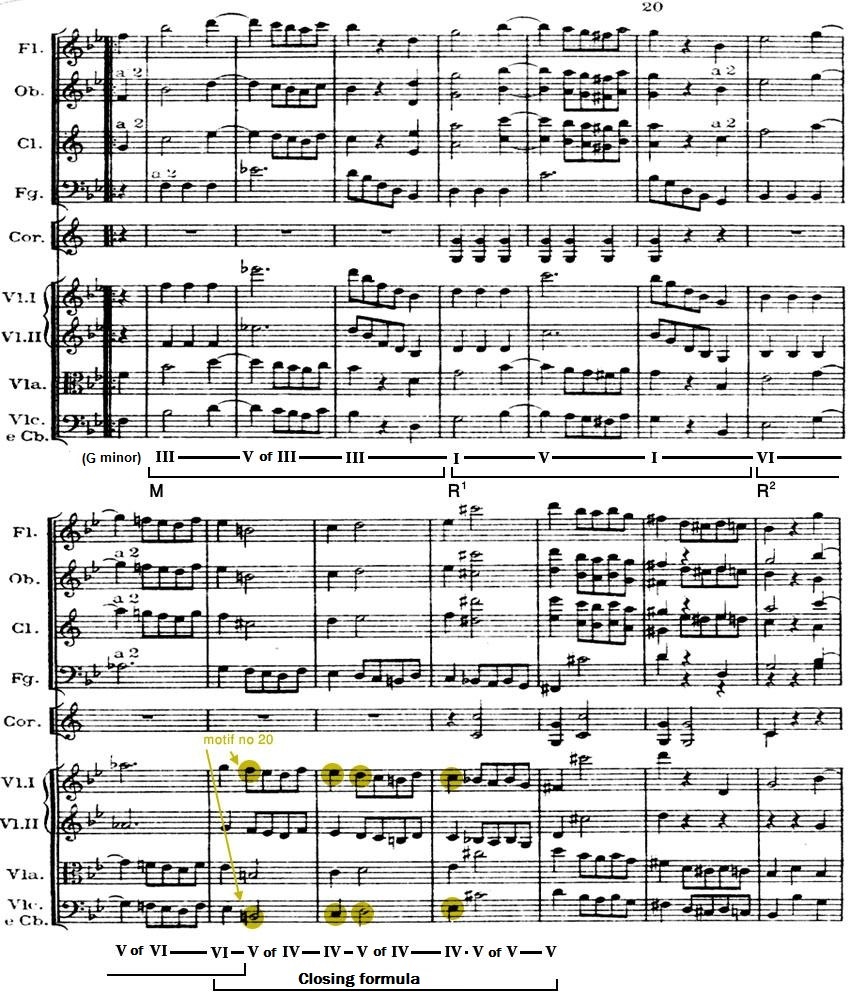
Example 488 : L.V. Beethoven : Piano sonata, op. 14, no 2, Andante (mm 17-20)
Type 7 sequence, motif no 4, and motif no 1

Example 489 : R. Schumann : Dichterliebe, op. 48, no 14 (mm 35-38)
Type 8 sequence
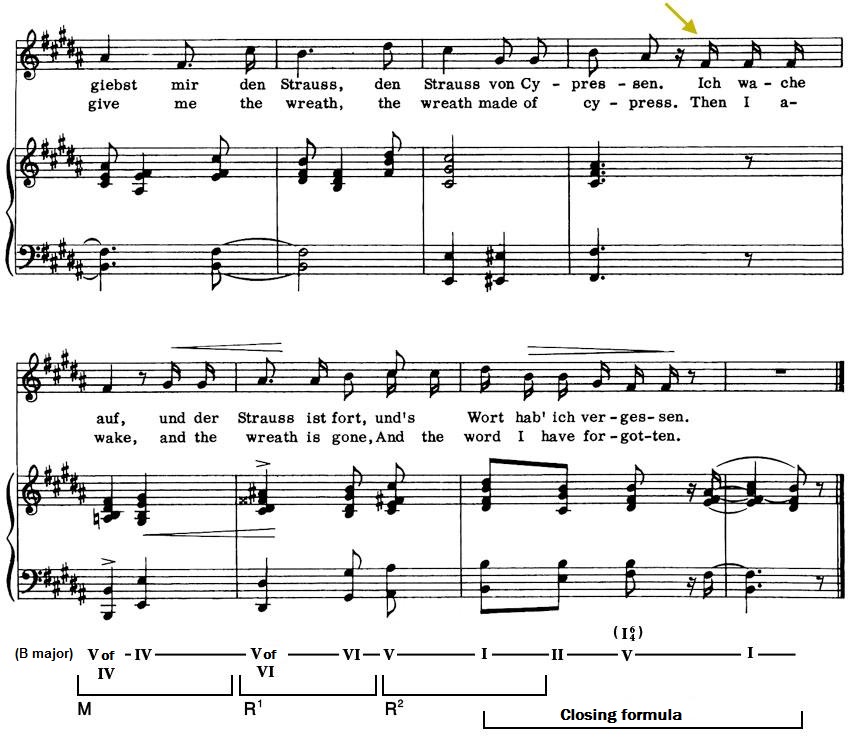
Example 490 : F. Chopin : Prelude, op. 28, no 17 (mm 19-27)
a) type 8 sequence and b) type 1 sequence
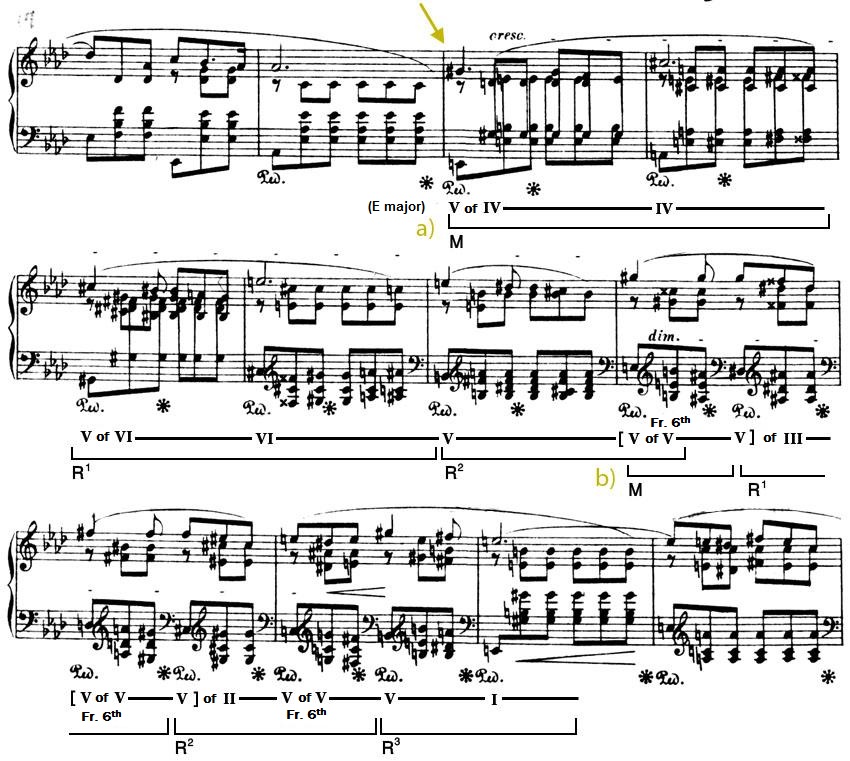
Example 491 : R. Wagner : Tristan und Isolde, Act I, scene 2 (mm 16-24)
Type 8 sequence

Example 492 : W.A. Mozart : Requiem, K. 626, Lacrimosa (mm 5-8)
Type 8 sequence with a type 7 sequence acting as the closing formula and featuring motif no 18

Example 493 : J.S. Bach : Little Preludes for Beginners, no 1, BWV 939 (mm 1-4)
Type 9 sequence
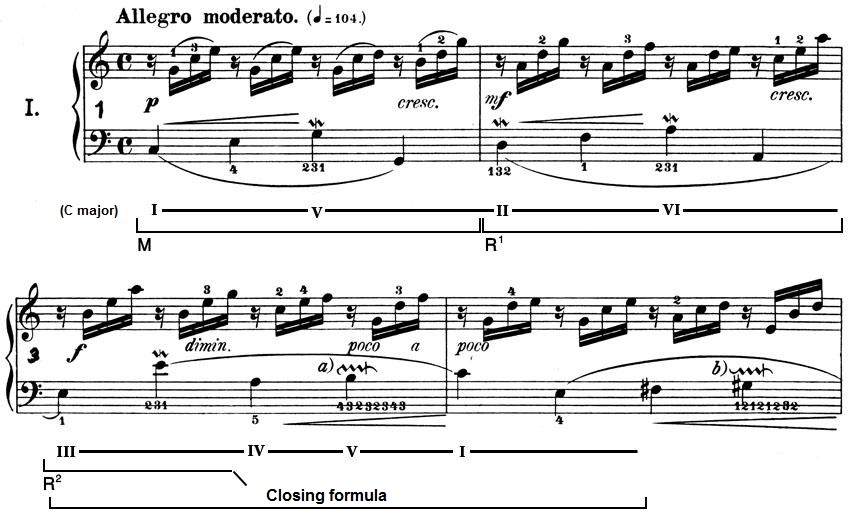
Example 494 : W.A. Mozart : String quartet, K. 428, II, Andante con moto (mm 36-45)
Type 9 sequence with a type 4 sequence as a closing formula followed
by a cadential formula VI - V of V (Ger. 6th) - V - I
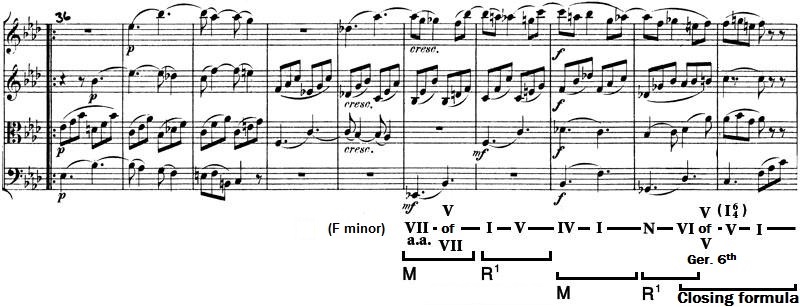
Example 495 : W.A. Mozart : Symphony no 41, "Jupiter", K. 551, II, Andante cantabile (mm 46-56)
Motif no 18 rerouted towards a type 9 sequence

Example 496 : L.V. Beethoven : Piano sonata, op. 2, no 2, IV, Rondo, Grazioso (mm 66-74)
Type 9 sequence
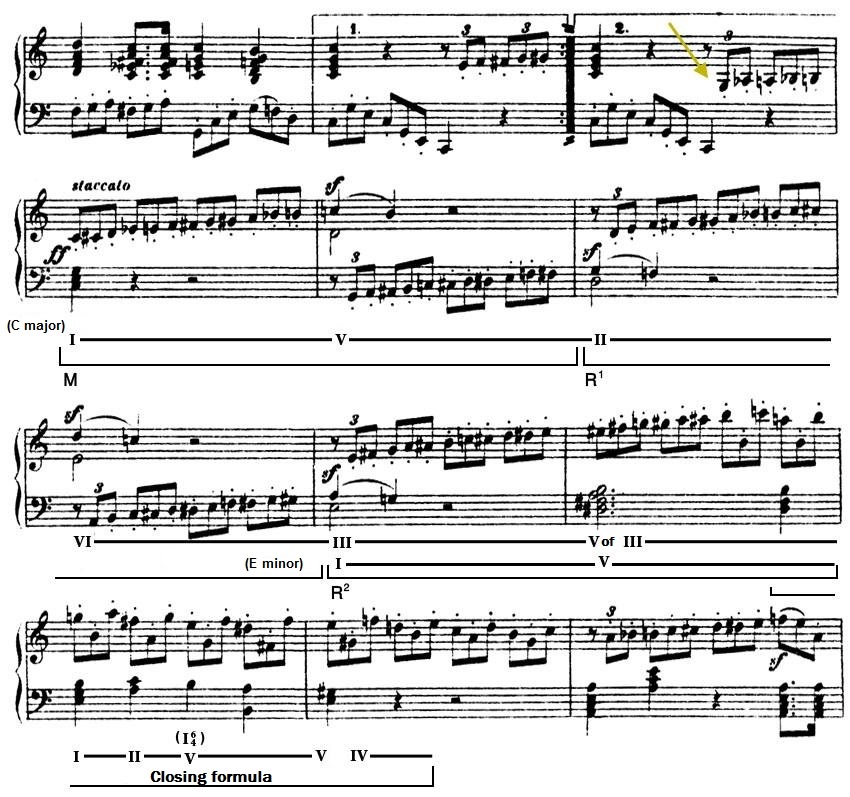
Example 497 : J. Brahms : String quintet no 2, op. 111, IV (mm 257-270)
Type 9 sequence, motifs nos 1 and 14

Example 498 : R. Schumann : Liederkreis, op. 24, no 6 (mm 79-99)
Type 10 sequence
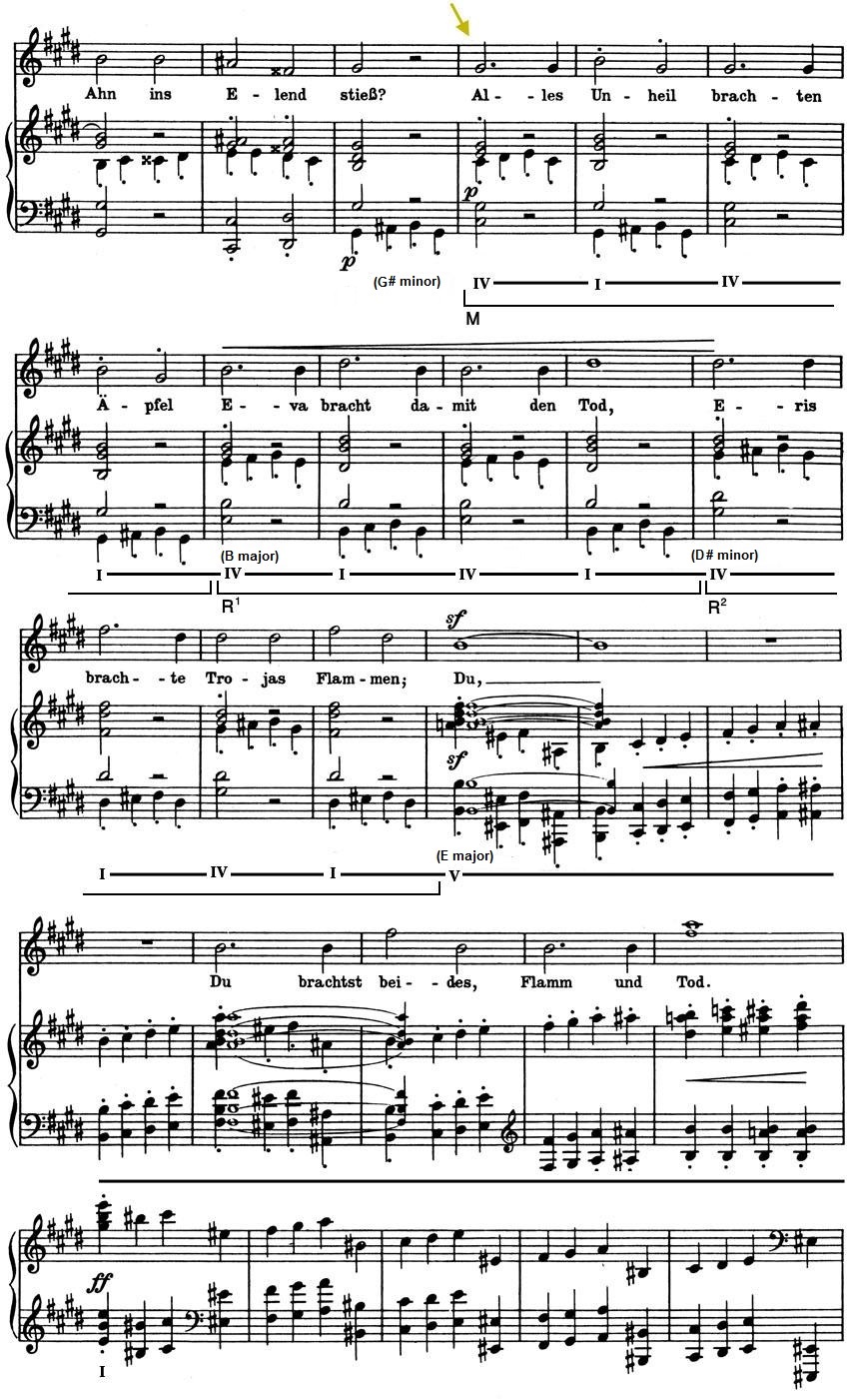
Example 499 : J.S. Bach : The Well-Tempered Clavier vol. I, fugue no 11, BWV 856 (mm 13-17)
Type 10 sequence

Example 500 : W.A. Mozart : Requiem, K. 626, Hostias (mm 23-34)
Type 10 sequence
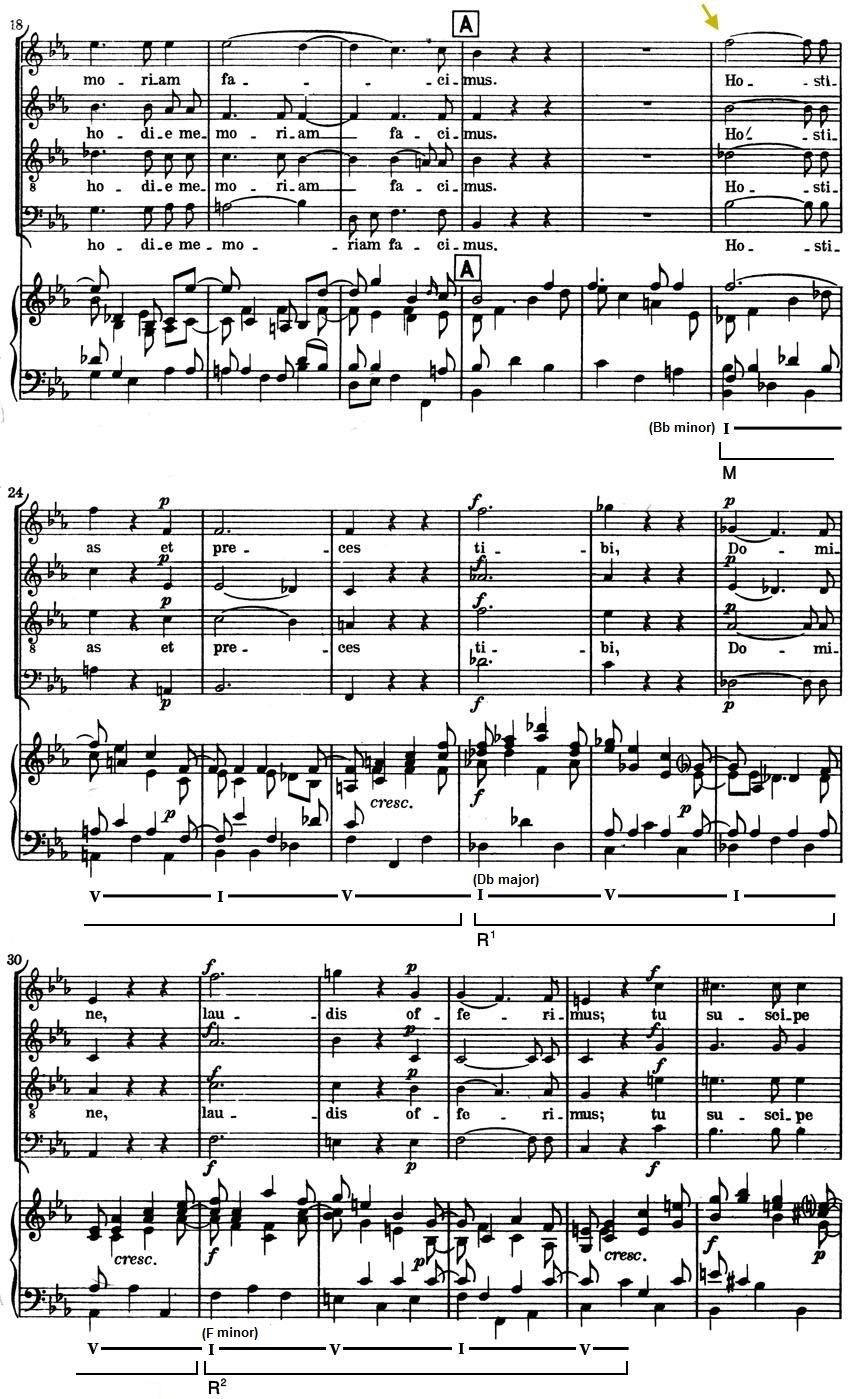
Example 501 : J. Brahms : Intermezzo, op. 119, no 3 (mm 30-35)
Type 10 sequence
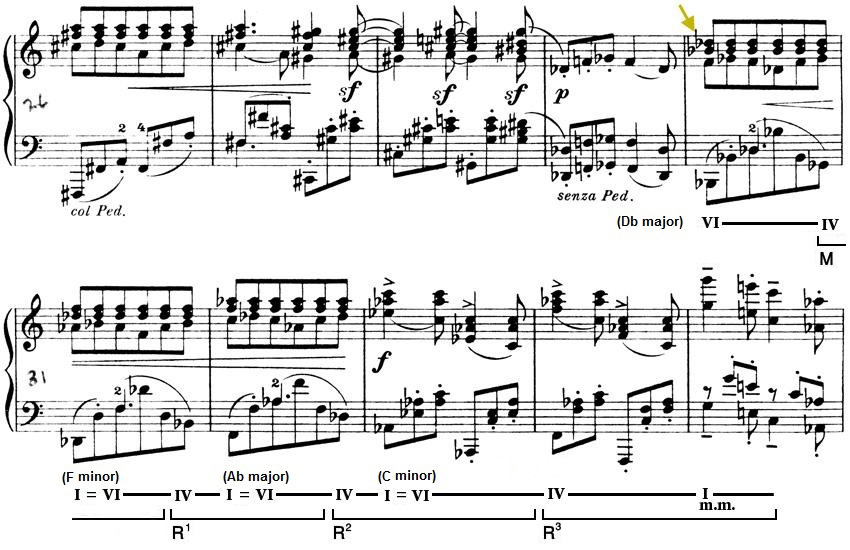
Example 502 : C.P.E. Bach : Württemberg sonata no 1, I (mm 4-8)
a) Type 11 sequence and b) type 1 sequence serving as the closing formula
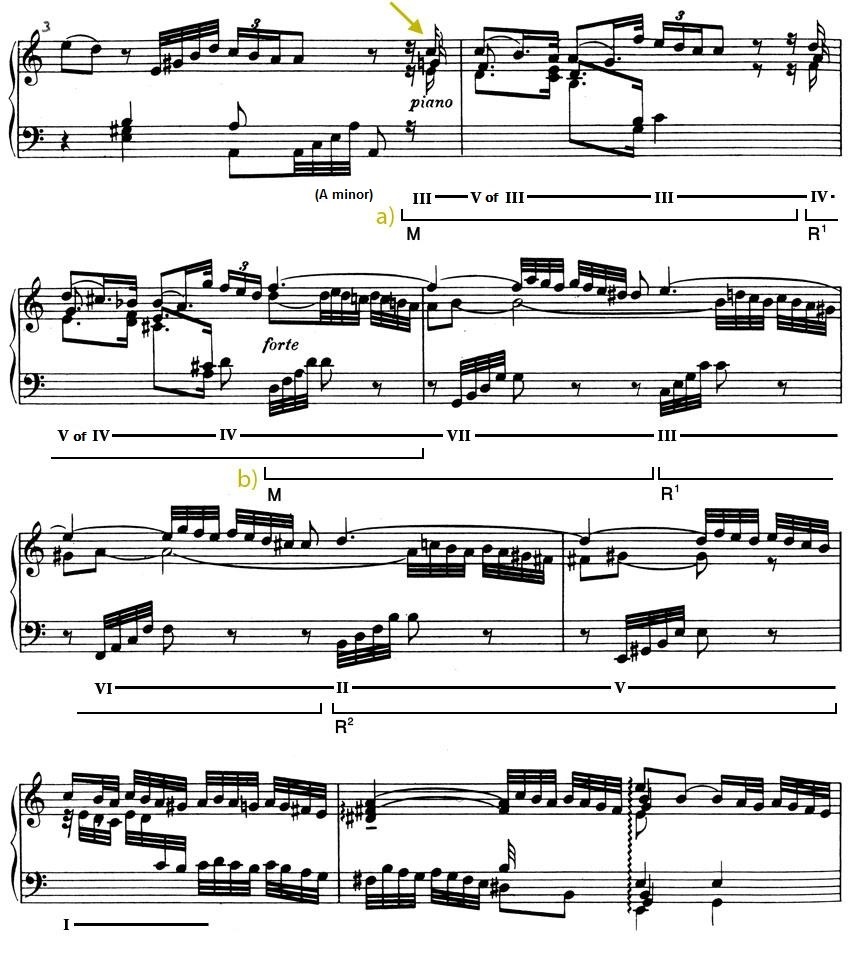
Example 503 : J. Haydn : String quartet, op. 33, no 3, I, Allegro moderato (mm 1-18)
Type 11 sequence with motif no.13 as the final formula

Example 504 : L.V. Beethoven : String quartet, op. 59, no 2, I (mm 3-10)
Type 11 sequence
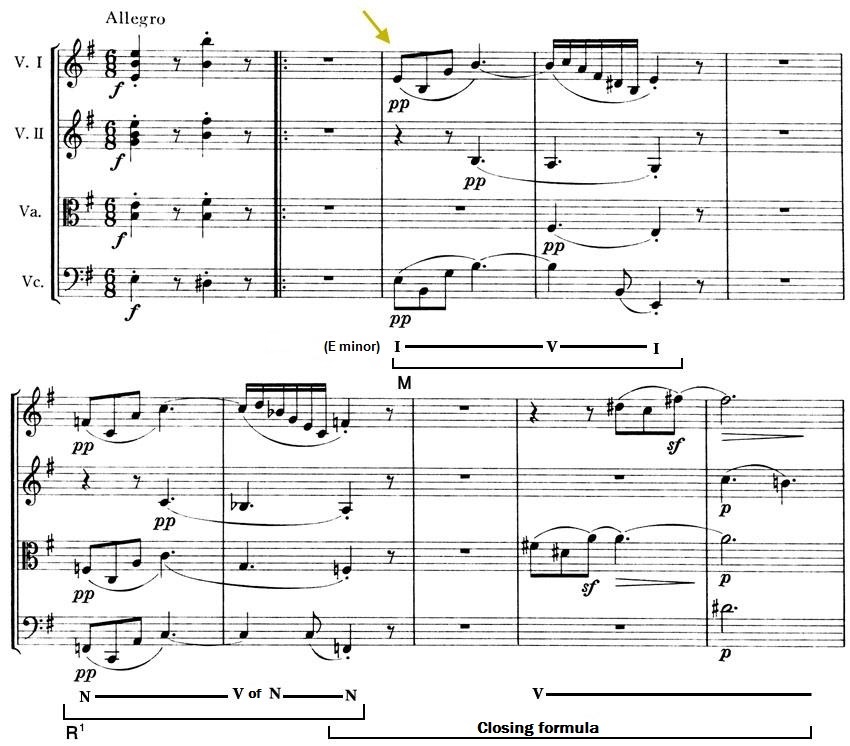
Example 505 : L.V. Beethoven : Piano sonata, op. 2, no 3, II (mm 11-19)
Type 12 sequence
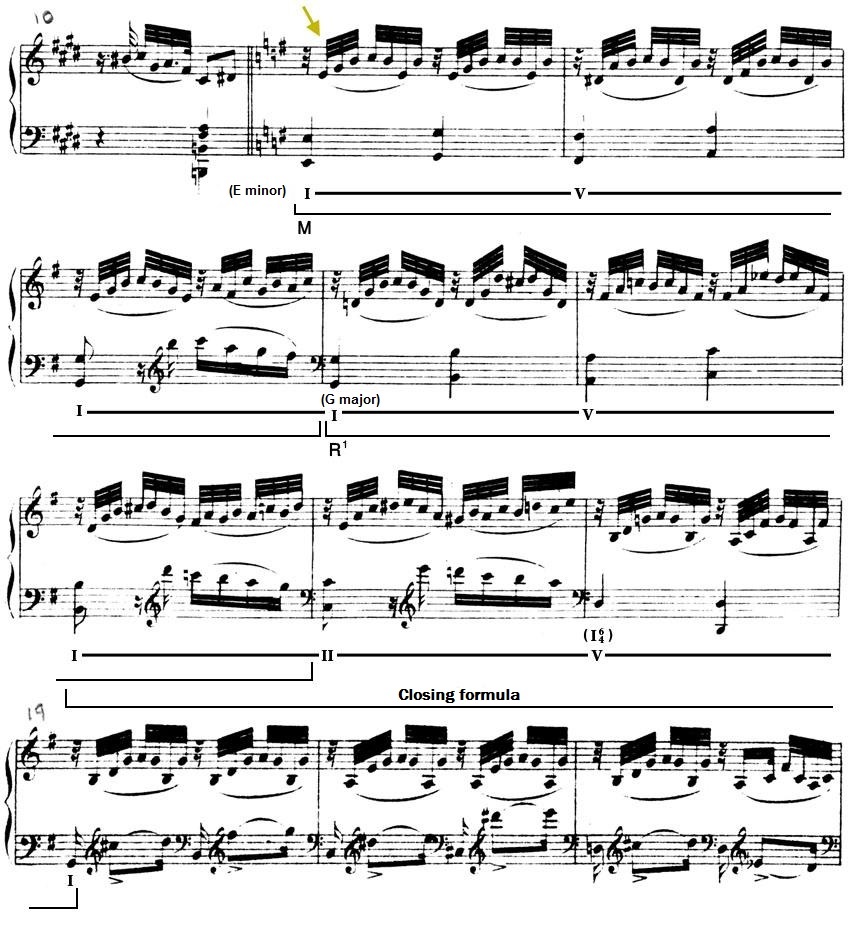
Example 506 : R. Wagner : Die Walküre, Act I: Duo, Mässig langsam
Type 12 sequence
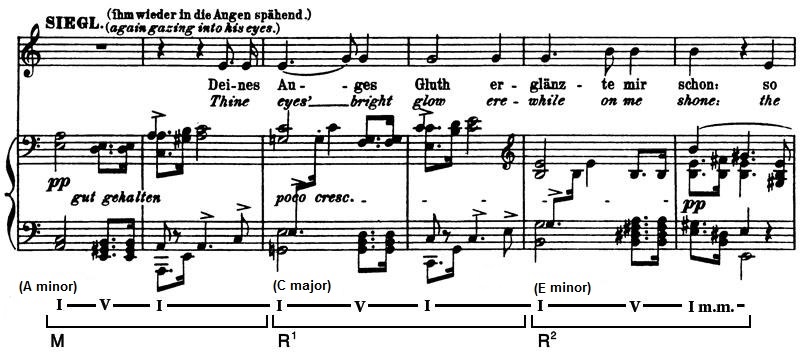
Example 507 : F. Chopin : Piano sonata no 2, op. 35, II, Scherzo, Piu Lento (mm 85-100)
Type 12 sequence

Example 508 : L.V. Beethoven : String quartet, op. 18, no 1, III, Scherzo (mm 36-50)
a) Formula IV - V - I = IV in sequence, heard in a non-modulating context, and b) type 12 sequence

Example 509 : J.S. Bach : The Well-Tempered Clavier vol. II, Fugue no 24, BWV 893, (end)
a) Type 1 sequence with two different formulations and b) formula IV -
V - I = IV in sequence, also heard in a non-modulating context

The Confutatis from Mozart's Requiem
|
